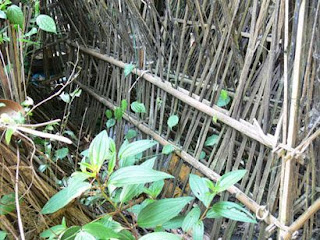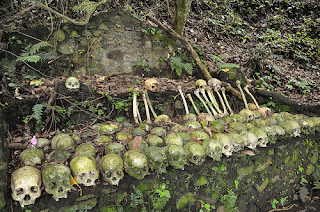The mountain village of Trunyan is located between Lake Batur and the outer rim
of Mount Batur, and is only accessible by boat. The Trunyanese are often referred to as Bali Aga(mountain
Balinese), a classification which refers to a conservative, pre-Hindu
way of life with ancient, neolithic customs and a conscious avoidance of
outside influences.
Contrary to elsewhere in Hindu Bali the Trunyanese do not cremate their
dead. Instead, after a ritual cleansing with rain water, the body of the
deceased is placed in a bamboo cage under the taru menyan tree. The forces of nature, in particular the wind, has dissolved the body tissues and only the skeleton remains. The skull is then placed on a stair-shaped stone altar which is located some 500m north, a special place which can only be reached by boat. Taru Menyan translates as 'nice smelling tree'. The typical
scent this tree emanates, neutralizes the smell of the rotting bodies. It is
also this tree from which the name Trunyan is derived.
However, the 'kuburan' as tourists call it, is not the only village cemetery. There are three cemeteries for the Trunyan; Sema Bantas, the burial place of those who have committed suicide, died in an accident, or those who have died of horrible disfiguring diseases. Sema Nguda, the burial place of children and/or young unmarried people. Typically those who are unmarried are not left to decompose in kuburan. Lastly, the Sema Wayah also called 'kuburan' where the dead are left to decompose in cages constructed of bamboo.
Women are not allowed to attend the Pengiriman ceremonies, the bringing of the body to the taru menyan
tree or to the cemetery. The reason for this is the belief that
otherwise the village will be struck by disaster, such as an earthquake,
a volcanic eruption, or a land slide.




























No comments:
Post a Comment